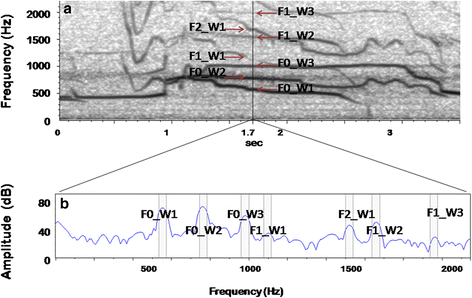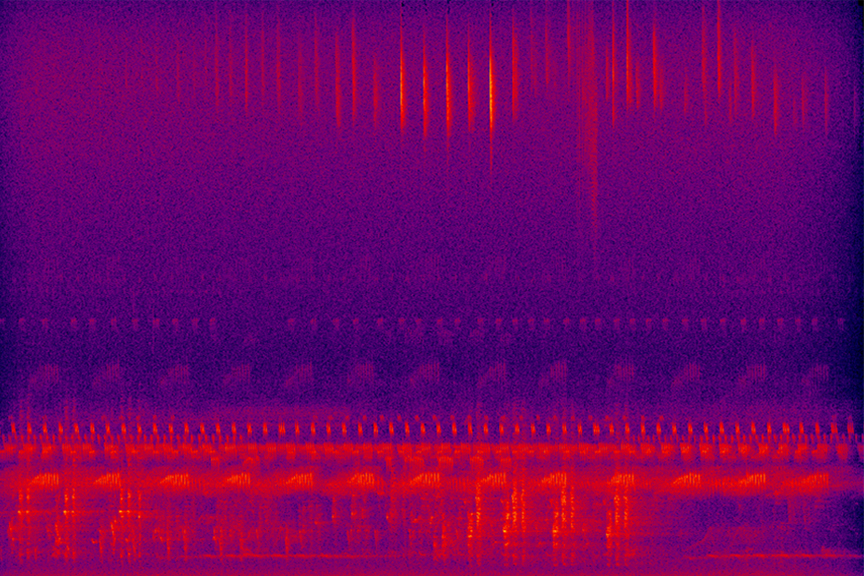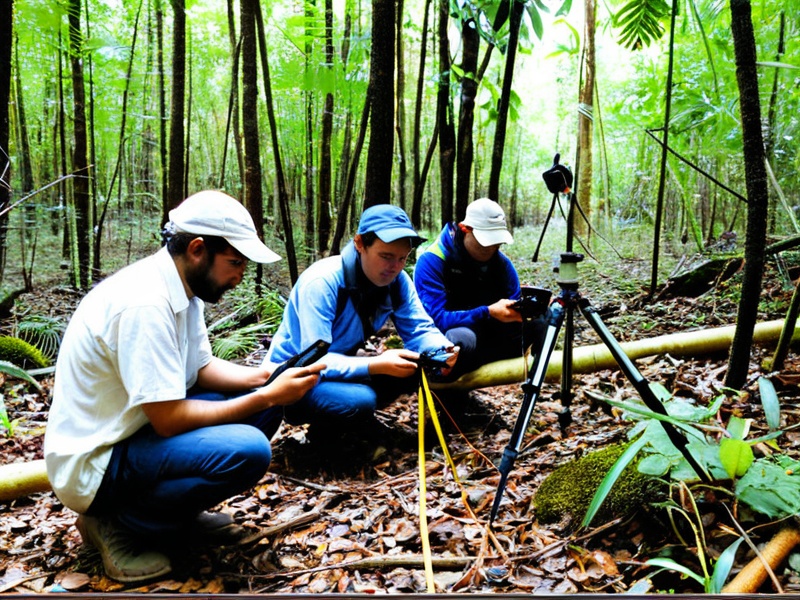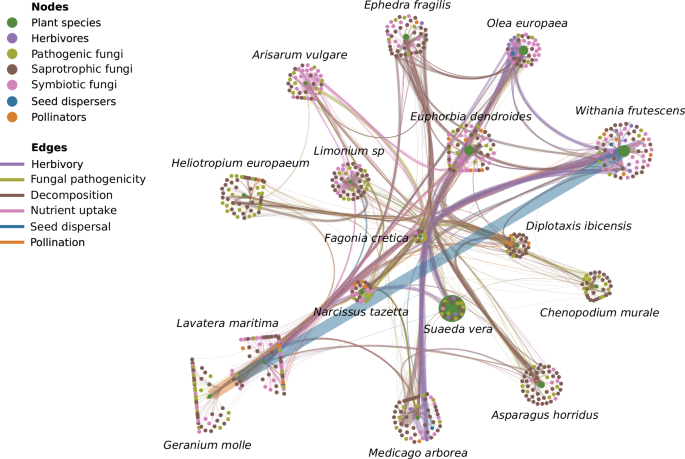Unlocking the Secret Language of Wolves: How AI Technology is Transforming Wildlife Communication Research
Exploring the fascinating world of wolf vocalizations and how technology is helping us understand their complex language
When we think of wolves, the haunting howl that echoes through forests and mountains often comes to mind first. But what if I told you that these iconic sounds are just the tip of the iceberg in wolf communication? As a researcher fascinated by animal communication, I've been following the groundbreaking work happening at the intersection of artificial intelligence and wildlife research. The dictionary of wolf sounds is far more complex than we ever imagined, and new AI technology is finally giving us the tools to decode it.

In this article, I'll take you on a journey through the fascinating world of wolf vocalizations and show you how cutting-edge AI technology is transforming our understanding of these complex communication systems. From the basics of wolf sounds to the sophisticated AI algorithms that are helping us interpret them, we'll explore how this research is not only expanding our knowledge but also revolutionizing wildlife conservation efforts.
The Fascinating World of Wolf Vocalizations
When I first began studying wolf communication, I was amazed to discover that wolves have a rich vocabulary that extends far beyond their iconic howls. Their communication system includes whines, growls, barks, woofs, and various combinations that serve specific purposes within pack dynamics.
Types of Wolf Vocalizations
Each type of vocalization serves a distinct biological purpose. Howls, for instance, are primarily used for long-distance communication—to coordinate pack movements, establish territory, or reunite separated members. I've learned that these can travel up to 10 miles in favorable conditions, making them remarkably efficient for keeping packs connected across vast wilderness areas.
What's particularly fascinating is how wolf vocalizations change based on context, season, and social hierarchy. During mating season, howling patterns become more frequent and complex. Alpha wolves use distinct vocal patterns to assert dominance, while subordinate pack members modify their vocalizations in response. Using AI speech generators, researchers are now able to analyze these subtle variations in unprecedented detail.
Wolf Vocalization Context Matrix
| Sound Type | Primary Purpose | Distance Range | Social Context |
|---|---|---|---|
| Howl | Long-distance communication, territory marking | Up to 10 miles | Pack coordination, location signaling |
| Growl | Warning, threat display | Close range (< 100 feet) | Dominance assertion, resource guarding |
| Whine | Submission, stress, greeting | Very close range (< 30 feet) | Pack bonding, pup communication |
| Bark | Alarm, threat | Medium range (up to 1 mile) | Warning of danger, territorial defense |
| Woof | Low-intensity alarm | Short range (< 500 feet) | Low-threat warning, pack alert |
Until recently, our ability to interpret these complex communication patterns was severely limited. Human hearing can't detect many of the subtleties in wolf vocalizations, and our manual analysis methods couldn't process the vast amounts of audio data collected in the field. This is where AI technology has become a game-changer, offering new ways to "listen" to wolves with unprecedented precision.
Understanding wolf "language" is not just an academic pursuit—it has vital implications for conservation. By decoding how wolves communicate about territory, prey, threats, and pack dynamics, we can better protect these keystone predators and the ecosystems they help maintain. Advanced AI voice interaction technologies are now making this possible on a scale we never thought possible.
The Science of Bioacoustics in Wildlife Research
Bioacoustics—the study of sound production and perception in animals—has evolved dramatically in recent years. When I first entered this field, we relied on simple audio recordings and manual spectrogram analysis. Today, we have sophisticated recording arrays, advanced signal processing algorithms, and machine learning tools that have transformed how we study animal vocalizations.

The Yellowstone Wolf Project has pioneered some of the most innovative audio collection methodologies in the field. Their network of weatherproof, solar-powered recording stations throughout the park captures wolf vocalizations 24/7, generating terabytes of audio data. This approach has allowed researchers to build the world's most comprehensive library of wolf sounds—a crucial resource for AI training models.
Evolution of Bioacoustic Research Methods
flowchart TD
A[Manual Field Recording\n1970s-1980s] --> B[Portable Digital Recorders\n1990s]
B --> C[Automated Recording Stations\n2000s]
C --> D[Networked Recording Arrays\n2010s]
D --> E[AI-Enhanced Bioacoustic Analysis\nCurrent]
style A fill:#FFE5CC,stroke:#FF8000
style B fill:#FFCC99,stroke:#FF8000
style C fill:#FFB366,stroke:#FF8000
style D fill:#FF9A3C,stroke:#FF8000
style E fill:#FF8000,stroke:#FF8000,color:#fff
Despite these technological advances, significant challenges remain in capturing, organizing, and interpreting animal sounds in the wild. Environmental noise, overlapping vocalizations, and variable recording quality can all complicate analysis. Weather conditions, terrain features, and even time of day can affect sound propagation, creating additional variables that must be accounted for.
Key Challenges in Bioacoustic Research
- Distinguishing wolf vocalizations from other wildlife sounds
- Filtering environmental noise (wind, water, human activity)
- Accounting for acoustic distortion over distance
- Processing massive volumes of audio data
- Identifying individual wolves from vocal signatures
- Correlating sounds with observed behaviors
Creating comprehensive "sound libraries" of wolf vocalizations has become a central focus of modern bioacoustic research. These libraries serve as reference collections and training datasets for AI systems. By cataloging thousands of verified wolf sounds with detailed metadata—including context, behavior, identity of the vocalizing wolf, and environmental conditions—researchers are building the foundation for more sophisticated analysis. The integration of AI text to speech character voice generators has also helped researchers create synthetic wolf vocalizations to test theories and fill gaps in their datasets.
AI's Revolutionary Role in Decoding Wolf Communication
Artificial intelligence has fundamentally transformed our approach to analyzing wolf vocalizations. When I look at how far we've come, it's truly remarkable. Machine learning algorithms can now identify patterns in wolf sounds that would be impossible for human researchers to detect manually. These systems can process thousands of hours of recordings in days rather than the months or years it would take a human team.
AI Wolf Vocalization Analysis Process
flowchart TD
A[Audio Collection] --> B[Sound Preprocessing]
B --> C[Feature Extraction]
C --> D[Machine Learning Classification]
D --> E[Pattern Recognition]
E --> F[Behavioral Correlation]
F --> G[Communication Dictionary]
A1[Field Recordings] --> A
A2[Acoustic Arrays] --> A
B1[Noise Filtering] --> B
B2[Signal Enhancement] --> B
C1[Spectral Analysis] --> C
C2[Temporal Features] --> C
D1[Neural Networks] --> D
D2[Random Forests] --> D
style A fill:#FF8000,stroke:#FF8000,color:#fff
style B fill:#FF8000,stroke:#FF8000,color:#fff
style C fill:#FF8000,stroke:#FF8000,color:#fff
style D fill:#FF8000,stroke:#FF8000,color:#fff
style E fill:#FF8000,stroke:#FF8000,color:#fff
style F fill:#FF8000,stroke:#FF8000,color:#fff
style G fill:#FF8000,stroke:#FF8000,color:#fff
The technical process of converting wolf sounds into analyzable data points is fascinating. Raw audio recordings are first preprocessed to remove background noise and enhance the wolf vocalizations. Then, these sounds are transformed into spectrograms—visual representations of sound frequencies over time. AI algorithms extract hundreds of acoustic features from these spectrograms, including pitch, duration, modulation, harmonic structure, and energy distribution.

What makes AI particularly powerful in this context is its ability to detect subtle nuances in these acoustic features that even trained human ears might miss. Neural networks can identify minute variations in pitch contours, recognize complex patterns across multiple vocalizations, and even detect emotional states based on acoustic signatures. This level of analysis was simply not possible before the advent of deep learning techniques.
I've found that PageOn.ai's Deep Search capabilities have been invaluable for integrating and visualizing these complex vocalization patterns. By creating interactive visual representations of wolf communication networks, researchers can more easily identify connections between different types of vocalizations and their contexts. This has led to several breakthrough discoveries about how wolves coordinate hunting activities and maintain territorial boundaries.
The Colossal Foundation Partnership
A groundbreaking collaboration between the Colossal Foundation, Yellowstone Forever, the Yellowstone Wolf Project, and Grizzly Systems is pushing the boundaries of what's possible in wolf communication research. This partnership brings together:
- Bioacoustic expertise from leading wolf researchers
- Advanced recording technology deployed throughout Yellowstone National Park
- Cutting-edge AI algorithms specifically trained on wolf vocalizations
- Substantial computing resources required for processing massive audio datasets
The results of this collaborative effort have been remarkable. Researchers have begun to identify distinct "dialects" among different wolf packs and can now recognize individual wolves by their vocal signatures with over 85% accuracy. As we continue to refine these AI models, our understanding of wolf communication grows exponentially. Advanced ai voice generators are even being used to synthesize wolf vocalizations for experimental purposes, allowing researchers to test how wolves respond to specific acoustic patterns.
Practical Applications of Wolf Communication Research
The ability to decode wolf vocalizations has opened up exciting new possibilities for wildlife management and conservation. One of the most significant practical applications I've observed is the potential to track wolf movements and territories without relying on invasive collaring techniques. By strategically placing acoustic monitoring stations throughout wolf habitat, researchers can identify which packs are active in different areas based solely on their vocalizations.
Wolf Identification Accuracy by Method
Identifying individual wolves and packs through their unique vocal signatures has become increasingly reliable. Just as humans have distinctive voices, wolves have characteristic vocal patterns that AI can now recognize with impressive accuracy. This capability allows researchers to monitor specific individuals over time without visual confirmation, providing valuable data on survival rates, territory shifts, and pack dynamics.

Perhaps most fascinating is the emerging ability to predict wolf behavior based on vocalization patterns. By analyzing changes in howl frequency, duration, and acoustic structure, AI systems can now forecast movements and activities with surprising accuracy. For example, certain howling patterns reliably precede hunting behavior, while others indicate territorial responses to neighboring packs.
This predictive capability has practical applications for reducing human-wolf conflicts. By identifying warning signals and distress calls, wildlife managers can anticipate potential problem areas and take proactive measures. For livestock producers in wolf country, this could mean deploying additional deterrents during high-risk periods identified through acoustic monitoring.
Creating visual representations of wolf communication networks has been particularly valuable for both research and public education. I've used PageOn.ai's AI Blocks to transform complex vocalization data into intuitive network diagrams that show how information flows through wolf packs. These visualizations help researchers identify key individuals in pack communication and better understand how social hierarchies influence information sharing. The integration of free AI text to speech tools allows these visualizations to be accompanied by synthesized wolf vocalizations, creating powerful educational resources.
The Conservation Impact of Understanding Wolf Language
The conservation implications of decoding wolf communication are profound. For endangered wolf populations, this technology offers a non-invasive monitoring solution that causes minimal disturbance while providing maximum insight. I've seen firsthand how this approach is particularly valuable in areas where wolves are just beginning to reestablish, as it allows researchers to track recovery efforts without the risks associated with capture and collaring.
Cost Comparison: Traditional vs. Acoustic Monitoring
Cost-effectiveness is another significant advantage of acoustic monitoring. Traditional wolf tracking methods require expensive GPS collars (often $3,000-5,000 each), helicopter time for captures, and frequent field visits. In contrast, once acoustic monitoring stations are established, they can collect data continuously at a fraction of the ongoing cost, while covering much larger areas.
I've found that PageOn.ai's Vibe Creation tool has been instrumental in transforming complex wolf communication data into accessible conservation narratives. By creating visually compelling stories about wolf behavior and social structures, researchers can more effectively engage the public and build support for conservation initiatives. These narratives help people connect emotionally with wolves and understand their ecological importance.

Deterring wildlife crime is another important application of this technology. In areas where wolves face poaching threats, acoustic monitoring can alert authorities to sudden changes in wolf activity patterns that might indicate illegal killing. The ability to identify individual wolves by their vocalizations also means that the loss of specific pack members can be detected and investigated.
Perhaps most importantly, a deeper understanding of wolf social structures through their communication patterns helps build public support for conservation. When people learn about the complex family bonds, cooperative hunting strategies, and sophisticated communication systems that wolves employ, they often develop greater appreciation and empathy for these often-misunderstood predators.
Future Frontiers in Animal Communication Research
As I look to the future of animal communication research, I'm excited about the potential to expand AI-based analysis to other endangered species. The methods being pioneered with wolves could be adapted for big cats, elephants, primates, marine mammals, and countless other species with complex vocal communication systems. Each successful application builds our understanding of animal cognition and social behavior while providing valuable conservation tools.
Cross-Species Communication Analysis Potential
flowchart TD
A[Wolf Communication Research] --> B[Method Refinement]
B --> C{Application to Other Species}
C --> D[Big Cats]
C --> E[Elephants]
C --> F[Marine Mammals]
C --> G[Primates]
C --> H[Birds]
D --> I[Multi-Species Ecosystem Communication Networks]
E --> I
F --> I
G --> I
H --> I
I --> J[Comprehensive Ecosystem Communication Model]
style A fill:#FF8000,stroke:#FF8000,color:#fff
style B fill:#FF9A3C,stroke:#FF8000,color:#fff
style C fill:#FFB366,stroke:#FF8000
style I fill:#FF9A3C,stroke:#FF8000,color:#fff
style J fill:#FF8000,stroke:#FF8000,color:#fff
One of the most intriguing possibilities is cross-species communication pattern recognition. Animals don't exist in isolation—they inhabit ecosystems where multiple species interact and respond to each other's signals. Advanced AI could potentially identify how wolves react to raven calls that indicate carrion, how prey species respond to wolf vocalizations, or how different predators partition territories through acoustic signaling.
The concept of creating the "digital wild" through integrated bioacoustic monitoring represents a paradigm shift in wildlife research. Imagine a network of smart sensors throughout an ecosystem, continuously collecting and analyzing sounds from multiple species, weather patterns, and human activities. This comprehensive acoustic picture would provide unprecedented insights into ecosystem dynamics and allow for more informed conservation decisions.

I believe PageOn.ai's Agentic capabilities could revolutionize the visualization of multi-species communication networks. By creating interactive, self-updating models that incorporate new acoustic data as it's collected, researchers could observe ecosystem communication patterns evolving in real-time. These visualizations would help identify critical relationships between species and predict how disruptions might cascade through communication networks.
Of course, these advances raise important ethical considerations. As our ability to interpret and potentially influence animal communication grows, we must establish guidelines for responsible research and application. Questions about privacy, manipulation of behavior, and unintended consequences must be addressed thoughtfully. The goal should always be to enhance our understanding while minimizing disruption to natural communication systems.
Educational and Public Engagement Opportunities
One of the most exciting aspects of this research is its potential to transform complex wolf vocalization data into engaging visual stories that capture public imagination. I've seen firsthand how interactive visualizations of wolf communication patterns can make abstract scientific concepts accessible to audiences of all ages. These visual narratives help people connect emotionally with wildlife research and conservation efforts.
Public Engagement with Wolf Research
Using AI-decoded wolf sounds to build public fascination and support has proven remarkably effective. When people hear a wolf howl and can simultaneously see a visual representation of that sound's meaning and context, it creates a powerful learning experience. Museums, nature centers, and online platforms are increasingly incorporating these interactive elements into their educational programming.

Creating interactive educational tools that demonstrate wolf communication patterns has become more accessible with advances in visualization technology. I've developed several such tools using PageOn.ai's platform, which allows researchers to transform complex data into intuitive, interactive displays. These tools help students and the general public explore wolf communication at their own pace and level of interest.
Citizen science initiatives around wolf vocalization monitoring represent another exciting frontier. By developing user-friendly mobile apps that can record and analyze wolf sounds, researchers can engage the public directly in data collection. Hikers, campers, and wildlife enthusiasts become valuable contributors to scientific research while deepening their own connection to nature.
PageOn.ai has been instrumental in helping researchers share their findings through compelling visual narratives. The platform's intuitive tools allow scientists to create professional-quality visualizations without specialized design skills. This democratization of data visualization means that even small research projects can effectively communicate their findings to broad audiences, increasing the impact of important conservation work.
Transform Your Wildlife Research Visualizations with PageOn.ai
Ready to create stunning visual expressions of complex ecological data? PageOn.ai's powerful visualization tools can help you transform your research into compelling visual stories that educate and inspire.
Start Creating with PageOn.ai TodayConclusion: The Future of Wolf Communication Research
As we've explored throughout this article, the combination of advanced recording technology, AI analysis, and innovative visualization tools is revolutionizing our understanding of wolf communication. What once seemed like mysterious howls in the night is now being decoded into a sophisticated language that reveals the complex social lives of these remarkable animals.
The implications for conservation are profound. By understanding how wolves communicate about territory, prey, threats, and social relationships, we can better protect them and the ecosystems they help maintain. Non-invasive acoustic monitoring provides a window into wolf behavior that was previously accessible only through more disruptive methods.
Looking ahead, I'm particularly excited about the potential for cross-species communication research and the creation of comprehensive ecosystem communication models. These advances will deepen our understanding of how information flows through natural systems and how multiple species coordinate their activities through acoustic signaling.
Throughout this journey of discovery, tools like PageOn.ai have been invaluable for transforming complex data into meaningful visual narratives. As we continue to decode the dictionary of wolf sounds, these visualization capabilities will help us share our findings with broader audiences, building public support for wolf conservation and inspiring the next generation of wildlife researchers.
You Might Also Like
Creating Visual AI Ethics Frameworks: A Leadership Guide for Modern Business | PageOn.ai
Discover how to develop comprehensive visual AI ethics frameworks for your organization. This guide helps business leaders translate complex ethical principles into clear visual guidelines.
Building Trust in AI-Generated Marketing Content: Transparency, Security & Credibility Strategies
Discover proven strategies for establishing authentic trust in AI-generated marketing content through transparency, behavioral intelligence, and secure data practices.
Visualizing the AI Revolution: From AlphaGo to AGI Through Key Visual Milestones
Explore the visual journey of AI evolution from AlphaGo to AGI through compelling timelines, infographics and interactive visualizations that map key breakthroughs in artificial intelligence.
The AI Superpower Timeline: Visualizing US-China AI Race & Tech Developments
Explore the narrowing US-China AI performance gap, historical milestones, technical battlegrounds, and future projections in the global artificial intelligence race through interactive visualizations.
